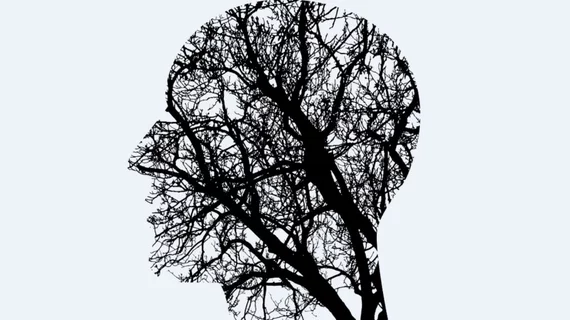Brain changes related to Huntington's evident on imaging decades before symptoms emerge
New imaging data suggest that subtle changes in the brain can be seen up to two decades prior to symptom onset in patients with Huntington’s disease.
Published in Nature Medicine, the analysis highlights the utility of combining MRI findings with blood and spinal fluid biomarkers to detect the earliest signs of neurodegeneration related to the debilitating condition. Experts hope their findings offer valuable insights that could lead to improved interventions for preserving brain function.
The genetic disease is caused by alterations of three DNA blocks (C, A and G) in the Huntington gene, which expand throughout a person’s life. Known as somatic CAG expansion, this process speeds up neurodegeneration, which experts now believe can be visualized in certain regions of the brain on imaging years before deficits in motor function take hold.
The research took place among 57 people with known Huntington’s disease gene expansion and 46 controls over a 5-year period. Participants were examined once at the beginning of the study and then again after five years. These involved assessments of their thinking, movement and behavior, in addition to undergoing neuroimaging and providing blood and CSF samples. None of the participants in the Huntington’s group displayed symptoms of the disease during either of their assessments.
On imaging, researchers noted atrophy of the caudate and putamen in the Huntington’s group, despite the absence of symptoms. These regions of the brain are known to be involved in motor function and thinking.
Imaging findings aligned with lab-related results as well. The team identified elevated levels of neurofilament light chain (NfL) and decreased levels of proenkephalin (PENK). NfL is a protein released into spinal fluid as a result of injured neurons, while PENK is a neuropeptide associated with neuronal health. Combined, these findings create an environment conducive to neurodegeneration, even if the effects are not immediately felt, the group noted.
These findings could indicate that there is an ideal timeframe for intervention to prevent symptoms from becoming unmanageable, the authors suggested.
“This unique cohort of individuals with the Huntington’s disease gene expansion and control participants provides us with unprecedented insights into the very earliest disease processes prior to the appearance of clinical symptoms, which has implications not only for Huntington’s disease but for other neurodegenerative conditions such as Alzheimer’s disease,” noted co-first author of the study, Dr. Rachael Scahill, with University College London Huntington’s Disease Research Center.
Learn more about the findings here.

